ATATURK: FATHER OF MODERN TURKEY
Mustafa Kemal Ataturk is the revered founder of the Republic of Turkey and is the centerpiece of the republic's history.
The name Ataturk means father of the Turks and is a title conferred to him by the Turkish National Assembly. His name, statues and image should be treated with respect.
Eighty-three years after he came to power and 68 years after his death, Ataturk's many social and cultural reforms are still intact, and his memory is strong among the Turks.
Following World War I, in which Turkey's Ottoman leaders sided with Germany and Austria, Allied Powers occupied Turkey. Ataturk, a general who fought with distinction during the war, began a resistance movement in 1919 after the Treaty of Sevres reduced the Ottoman Empire to a minor state.
Starting with Turkey's capital, then at Istanbul, Ataturk moved through eastern and central Turkey, building popular support for his campaign. He picked Ankara, a small rural town, as his capital and formed a new legislature.
He led provisional forces to victory in a war of liberation, defeating the Greeks in a decisive battle at Dumlupinar Aug. 30, 1922. This day is known as Victory Day and is now an official holiday.
In 1923, Turkey established peace with the Allies by signing the Treaty of Lausanne, which fixed the country's boundaries.
Ataturk declared the nation the Republic of Turkey Oct. 29, 1923, known today as Republic Day. Turkey then elected its Grand National Assembly and drew up a constitution.
Ataturk exercised an authoritarian power, which he used to create a modern, progressive state. He set forth to educate the people in liberal democratic ideas and thinking.
Ataturk's decrees revamped the entire fabric of Turkish life. He eliminated the Sultanate and Caliphate, the joint political and religious arms of the Ottoman Empire. He declared Turkey a secular state and separated religious and state affairs.
A European civil code, drawn from several countries, replaced the Moslem Koranic law. He gave women full political and social rights. He also abolished polygamy and harems.
He prohibited wearing of the fez - a tasseled, cone shaped traditional hat, and ordered men to wear western headgear. He replaced Arabic script with the Latin-based alphabet. He decided all Turks should have surnames, not previously known in Turkey. Before, people were known by their occupation. He started a nationwide system of compulsory education, set up the beginnings of a modern industrial system, and built a modern European-style capital in Ankara.
Most important to the United States, he established a foreign policy rooted with the West, a movement which culminated with Turkey's acceptance into NATO in 1952.
Ataturk is buried in a mausoleum in Ankara atop a hill visible throughout the city. There are other reminders of his contributions also. Every city and village has a main street named for him. Statues of him dominate market centers and city parks.
On Turkish holidays, his face is everywhere. Huge murals adorn government and private buildings. In every home and business, his picture hangs in a place of honor. Foreign dignitaries and private citizens lay wreaths at his tomb, honoring the memory of his contributions to the entire country.
Born in Salonica, Greece, in 1881, then the capital of the Turkish-European province under the Ottomans, he died at the Dolmabahce Palace in Istanbul Nov. 10, 1938 at 9:05 a.m.
Throughout his mausoleum, all clocks are set at that time. Each year, on Nov. 10, the Turkish people hold memorial services in his honor.
At Incirlik, there is a memorial to honor Ataturk. Americans and Turks throughout the country observe two minutes of silence beginning at 9:05 a.m. on the anniversary of his death.
Such is the respect that Ataturk's memory still commands. Photos of Turkey
In December of 2004 I made a two or three day stopover in the Turkish city of Istanbul while on my way to Egypt. At the top of my list of sights to see in Istanbul was this place, known as Hagia Sofia in Greek, Sancta Sophia in Latin, the Church of the Divine Wisdom in English and now Aya Sofia in Turkish. |
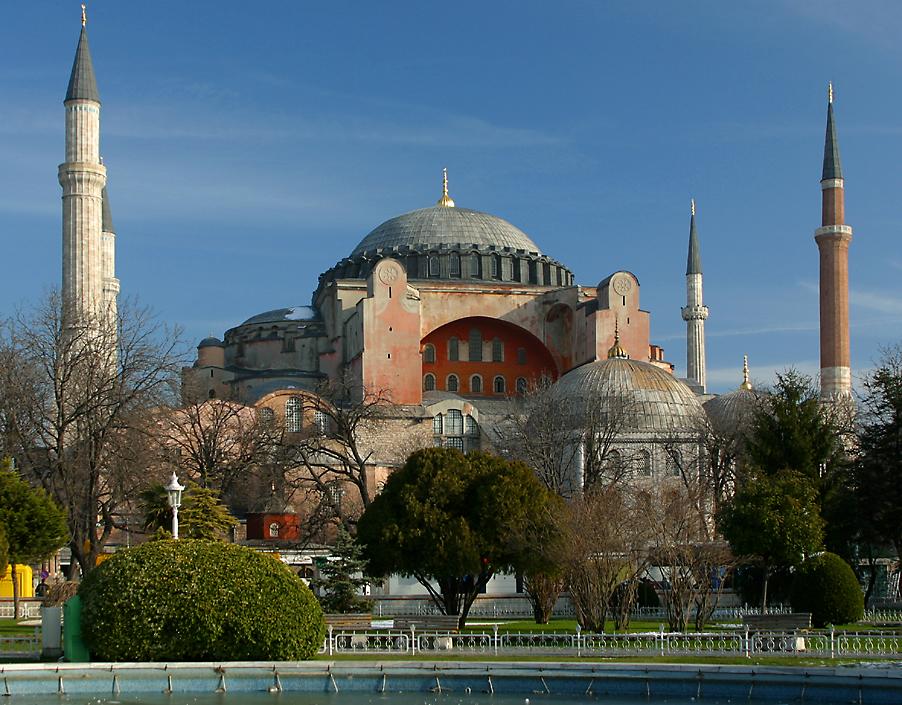 |

That English translation is a bit poor, a more accurate but admittedly clumsier name would be Church of the Holy Wisdom. Completed in AD 537, it's considered a marvel of the ancient world because of its enormous dome, the largest in the world until modern building materials became available.
|
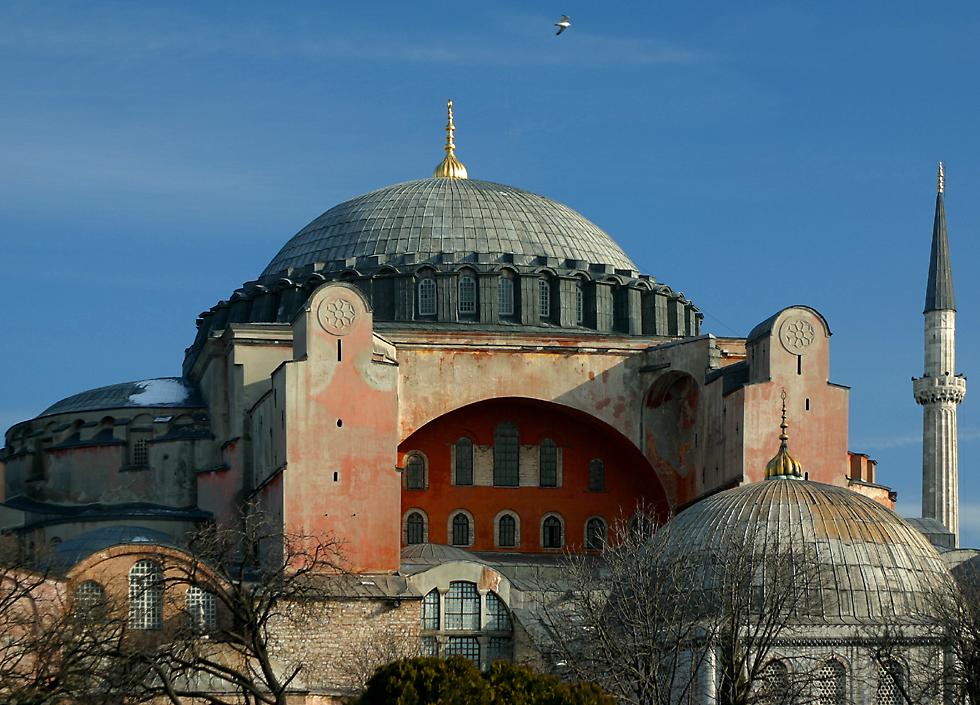 |

It's not a bad sight when lit up at night-time, even though it's had many additions made to its exterior, the most obvious of which are the four tall minarets which now surround it.
|
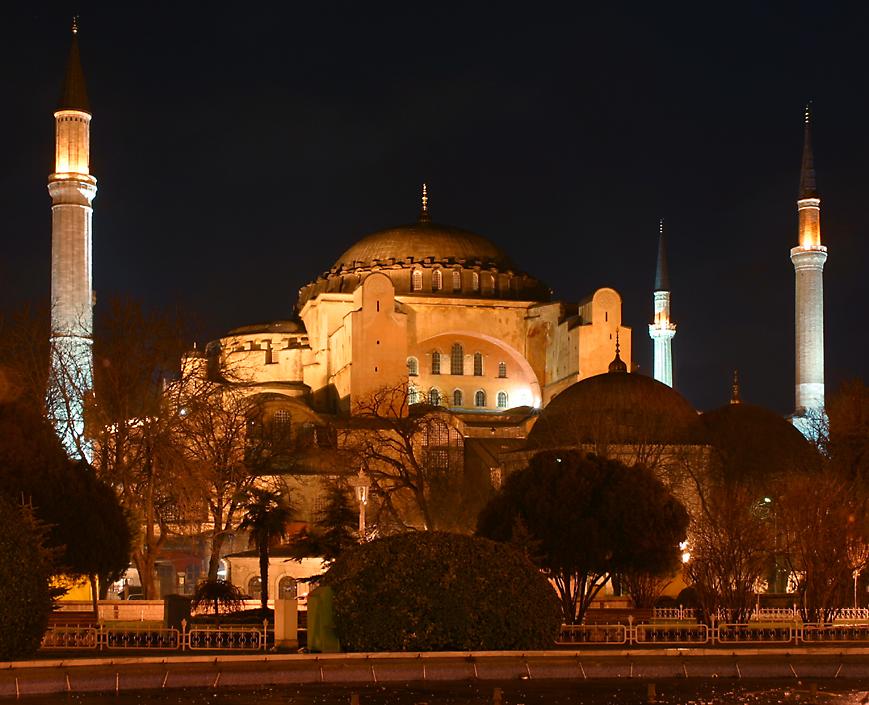 |

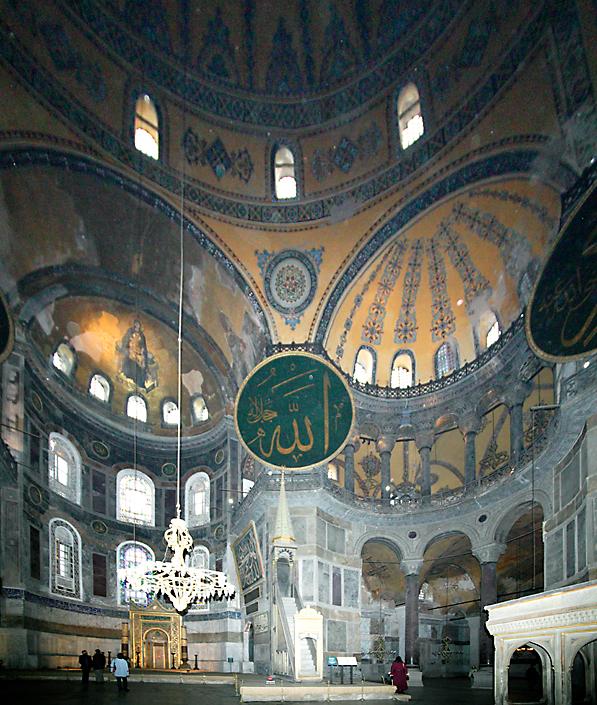
The main dome is an incredible achievement, but it wasn't done without difficulties, in fact the first dome collapsed during an earthquake only eleven years after it was constructed, and the second only lasted another five years. It had to be reconstructed several times over the following centuries, and more buttressing added to the outside to provide extra strength.
In a way, the history of Aya Sofia is a small-scale reflection of Istanbul itself, which has gone through as many changes of name as the cathedral. The city was originally settled in 667 BC by Greeks who named it Byzantion after King Byzas; it was besieged by pagan Roman emperor Septimius Severus in AD 196, who rebuilt it and Latinized its name to Byzantium.
In AD 330 emperor Constantine refounded it, named it Constantinople after himself, and moved the capital of the Roman Empire from Rome to Constantinople. When the empire broke into two parts, Constantinople became the capital of the eastern, Byzantine Empire. In 1453 the Byzantine empire was overthrown by muslim armies, and Constantinople became Constantiniyye the capital of the Ottoman Empire, making this the only city in the world which has been the capital of three different empires.
After the conquest Hagia Sophia became Aya Sofia and was turned into a mosque, which it remained until the statesman Ataturk disbanded the Ottoman sultanate, proclaimed the Turkish Republic with its capital at Ankara, renamed Constantiniyye to Istanbul and turned Aya Sofia into a museum. Today you can still see remnants of both its Christian and its Muslim periods, the latter represented by the large discs with the name of Allah and some of the sultans, a muslim pulpit with steps called a mimber, and the mihrab beyond the chandelier which shows the direction to Mecca.
|

Since Islam prohibits the depiction of humans and animals in order to avoid idolatry, muslim artists have long specialized in drawing complex geometric patterns such as these - though from the crookedness of the top pattern and the distinct bend in the top, left-hand line, it looks like this particular artist has disobeyed the equally strong Islamic prohibition against alcohol!
|
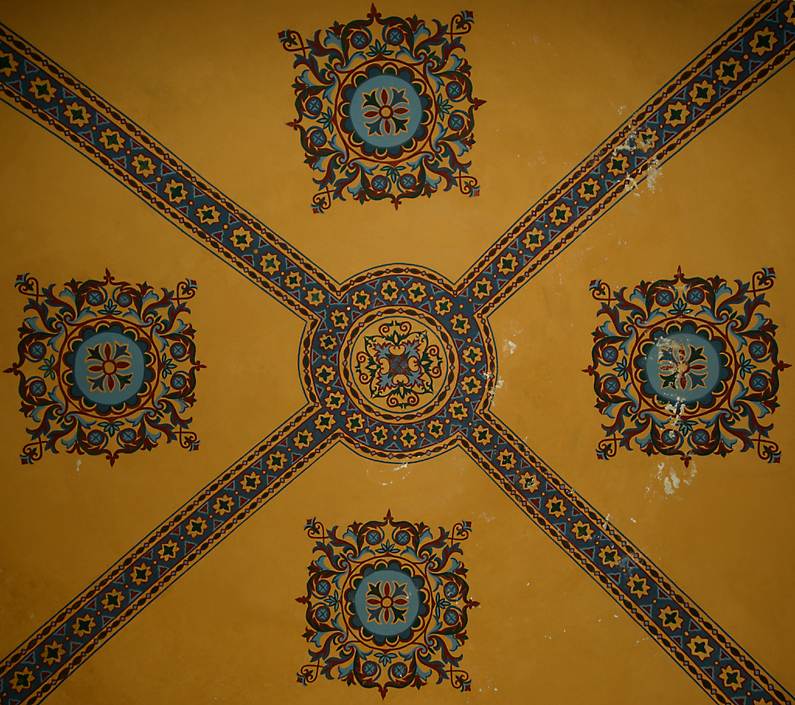 |

Here's that mihrab, surrounded by text from the Koran both in stained glass and classic blue tiles, which are used in many middle eastern mosques.
|
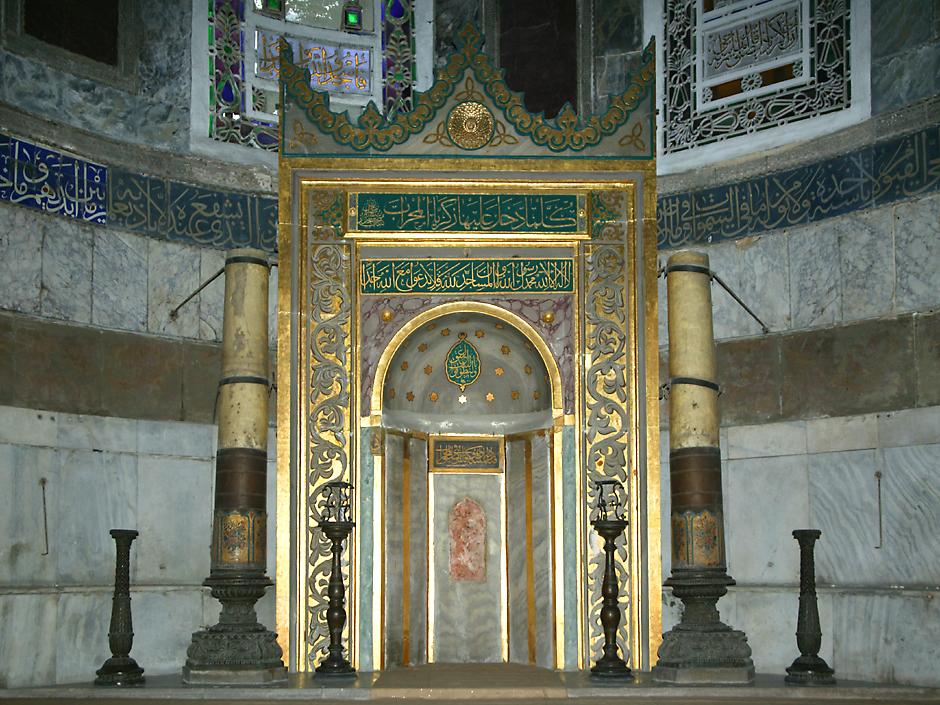 |

Thankfully the invaders didn't destroy all of the Christian artwork on the walls and domes of the cathedral, instead they covered some of it with plaster, which has since been removed to reveal the mosaics underneath. Here on the inside of one of the small semi-domes surrounding the main dome is a 10th century depiction of the virgin Mary and Jesus. Unfortunately the main dome has been obscured for many years by a mass of scaffolding, so there's not much point taking of a photo of it.
|
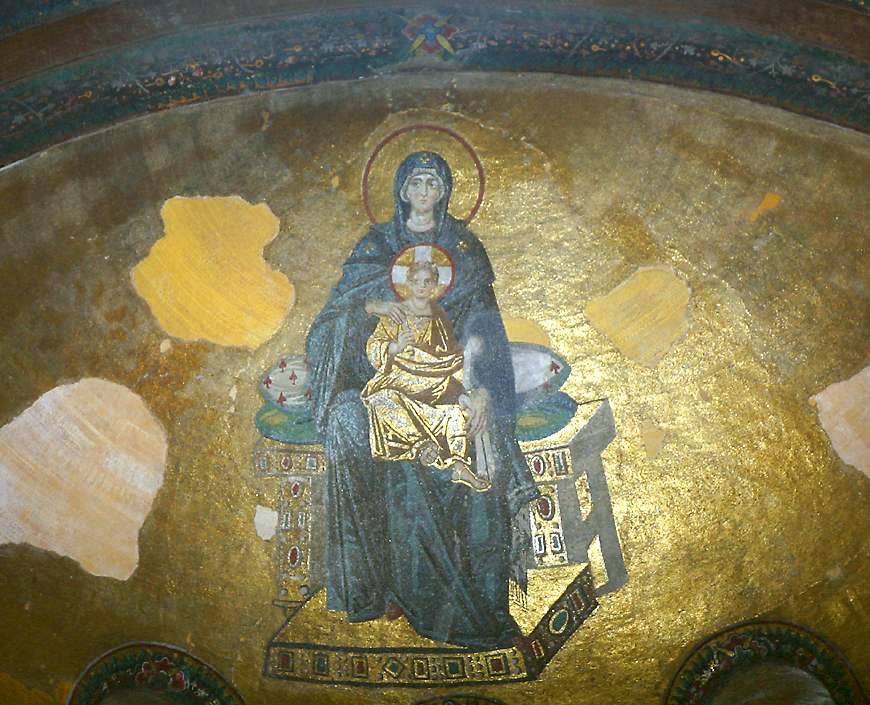 |

Here's Jesus with John the Baptist. Look closely and you'll see the individual tiles which make up these mosaics; 30 million tiny gold tiles were used to line the main dome itself.
|
 |


I think of this mosiac as Christ and His Opposable Thumb.
Whatever the mosaic's precise meaning, it's clear that Jesus thinks that Emperor Constantine IX and Empress Zoe are A-OK, and he wants to publicly express his gratitude to them for providing all of those bags of money so he could have a comfy throne, a nice cushion, a good book to read and 30 million tiny gold tiles to make the place look nice.
|

From Aya Sofia it's a very short stroll across a pleasant park to the Blue Mosque, whose construction was inspired by its near neighbor. Even from the outside it's easy to see the similar plan of a main dome surrounded by multiple semi-domes, which is just as well, since I didn't have time to go inside.
|
 |

From the outside I think it looks better balanced and proportioned than Aya Sofia, but internally its architecture is less daring than its predecessor, with four large columns holding up the main dome, instead of the free-standing dome of the cathedral.
|
 |

Like Aya Sofia, it's also lit up at night and in the warmer months there's a nightly sound-and-light show.
|
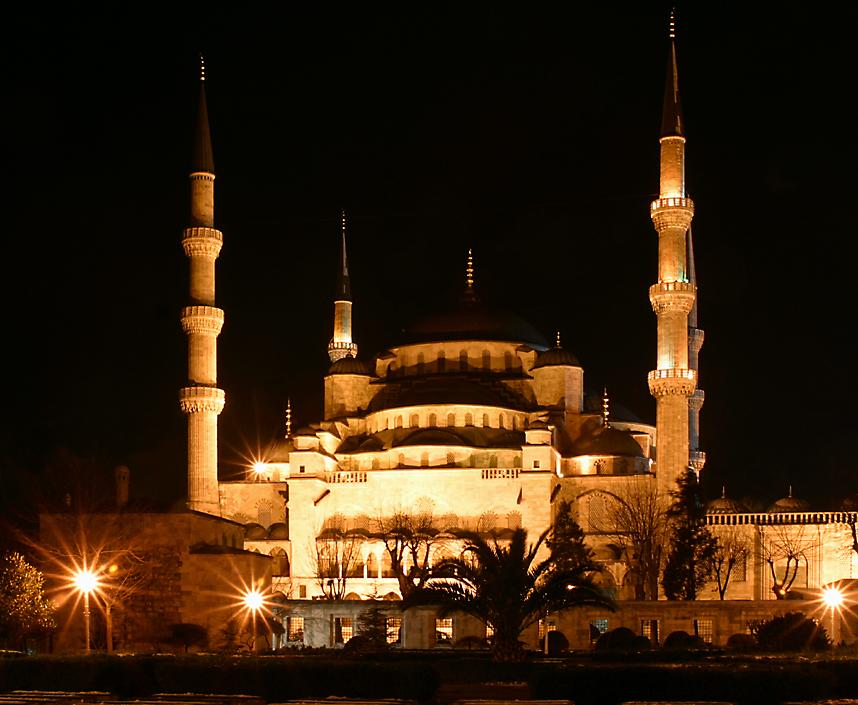 |

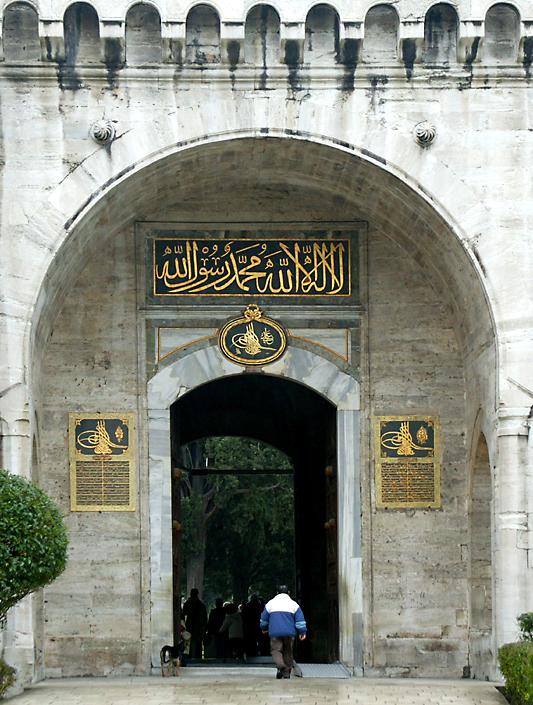
I really regret not having spent much time in Istanbul, because not only didn't I have time to see the inside of the Blue Mosque, I also missed seeing many of its other most interesting sights. For instance, the Gate of Salutations here is about as close as I got to viewing the legendary Topkapi Palace, home of the Ottoman sultans for the first 400 years of their reign.
Even worse in my opinion, I somehow failed to visit the Hippodrome, which is right beside the Blue Mosque. This was the center of the pagan Roman city, even today it includes obelisks and columns looted from Egypt and ancient Greece. And while I did pass the entrance to the Roman underground water cisterns, I didn't find time to tour them, either.
|


The mosque of Suleyman the Magnificent is the largest in Istanbul and the grandest in all of Turkey.
It was built between 1550 and 1557 by sultan Suleyman I, and his tomb is just outside the mosque, near the tomb of his ambitious and powerful wife Roxelana.
Suleyman's death in 1566 began the period known as the Rule of the Women, with weak sultans being encouraged to indulge in the pleasures of the flesh while their mothers and grandmothers indulged in political intrigue and scheming. The expansion of the empire was only achieved by the efforts of the viziers and other officials who did the day-to-day running of the empire.
|

Just down the hill from the mosque of Suleyman the Magnificent is Yeni Cami, the so-called "new mosque" which is actually about 400 years old. It's very close to the Galata bridge which crosses the waterway known as The Golden Horn to an area of the city called Galata.
|
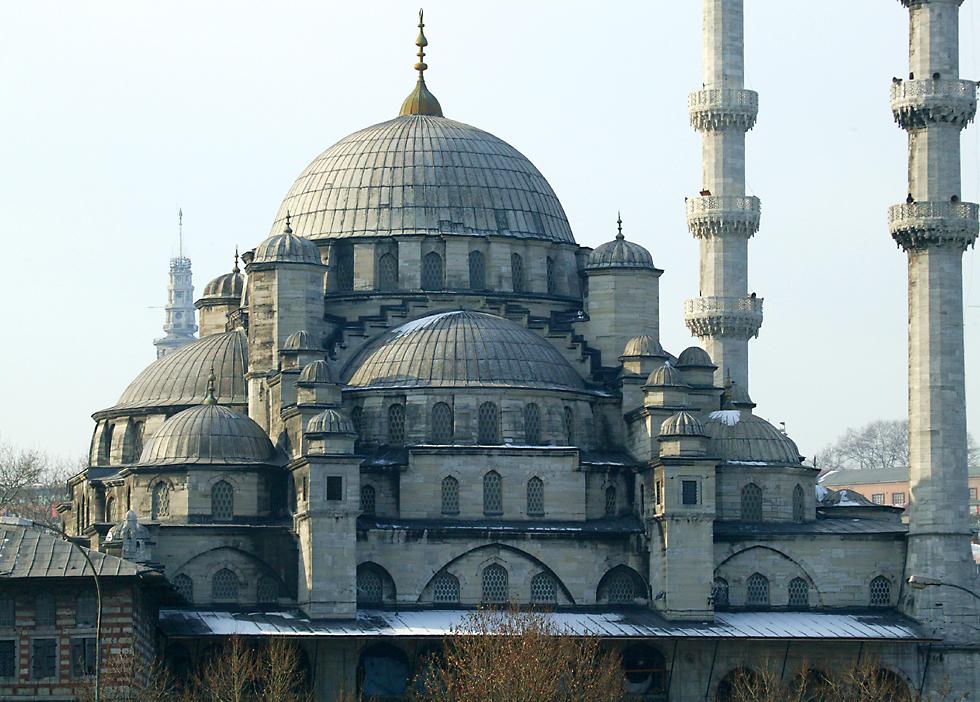 |

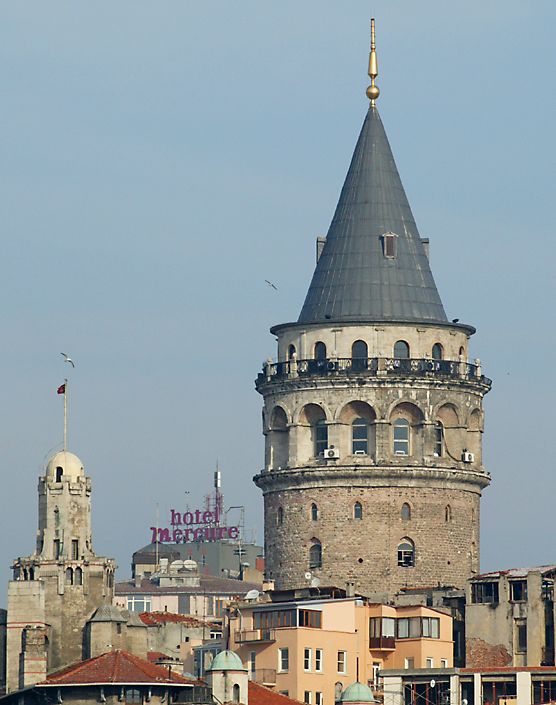
And here's the Galata Tower, the highest point of a citadel built by traders from the Italian city of Genoa. Standing 67 meters high, it was the tallest building in the city.
When it was built in 1348 it was called The Tower of Christ and it controlled a giant metal chain which was placed across the Golden Horn to prevent muslim invaders from bringing ships into the waterway. Amazingly, some of the links from this chain are on display at Istanbul's military museum, though they didn't really help the city, since the invaders transported their boats overland at night and stormed in the next morning.
While I was waiting to catch my flight back to the United States I read of another claim to fame which the Galata Tower has, as the launching place for a very early manned heavier-than-air flight! It's claimed that in 1638 Hezarfen Ahmet Çelebi climbed the tower, strapped on a pair of wings and successfully flew across the Bosporus. Çelebi is still revered in Turkey, one of Istanbul's three airports is even named after him.
|

If you're in Istanbul then it's very worthwhile to take a boat trip down the Bosporus, which together with the Sea of Marama connects the Mediterranean Ocean to the Black Sea. At the narrowest point of the Bosporus you'll find the Fortress of Europe, built by the muslim armies to support their conquest of Constantinople. During their seige the Ottoman commanders used the Fortress of Europe, together with the Fortress of Asia on the opposite shore, to control traffic on the Bosporus and prevent help coming to the city.
|
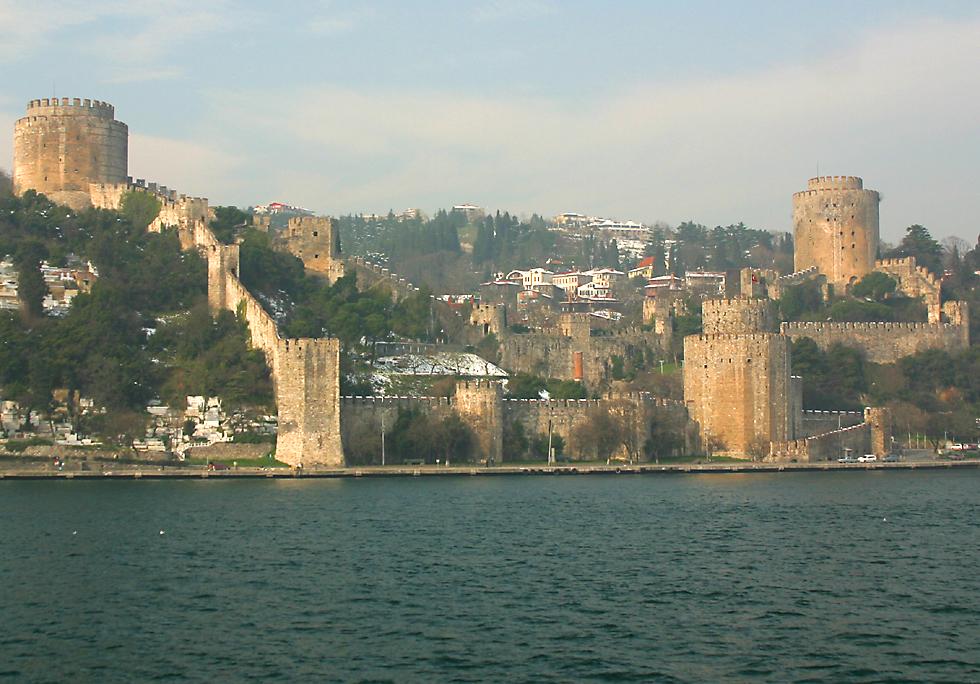 |

You can see from the surrounding houses and the vehicles on the street just how large the walls and towers of the fortress are.
|
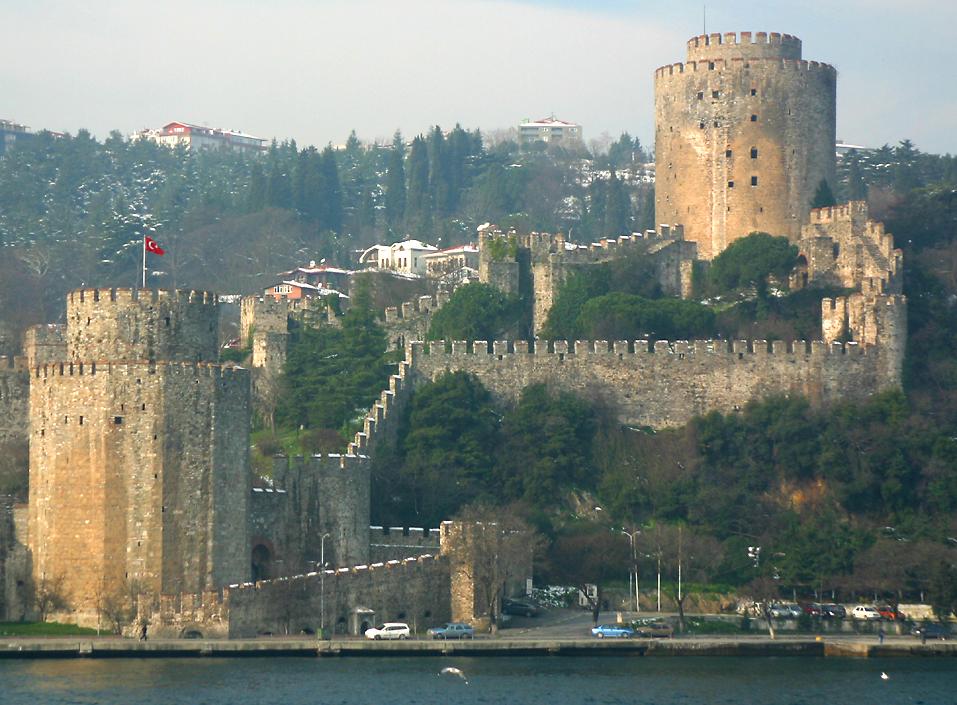 |

Remarkably it's said that the fortress was built in just four months, probably because of some innovative motivational techniques put in place by the sultan - a vizier was put in charge of building each of the main towers and threatened with execution if it wasn't finished in time!
|
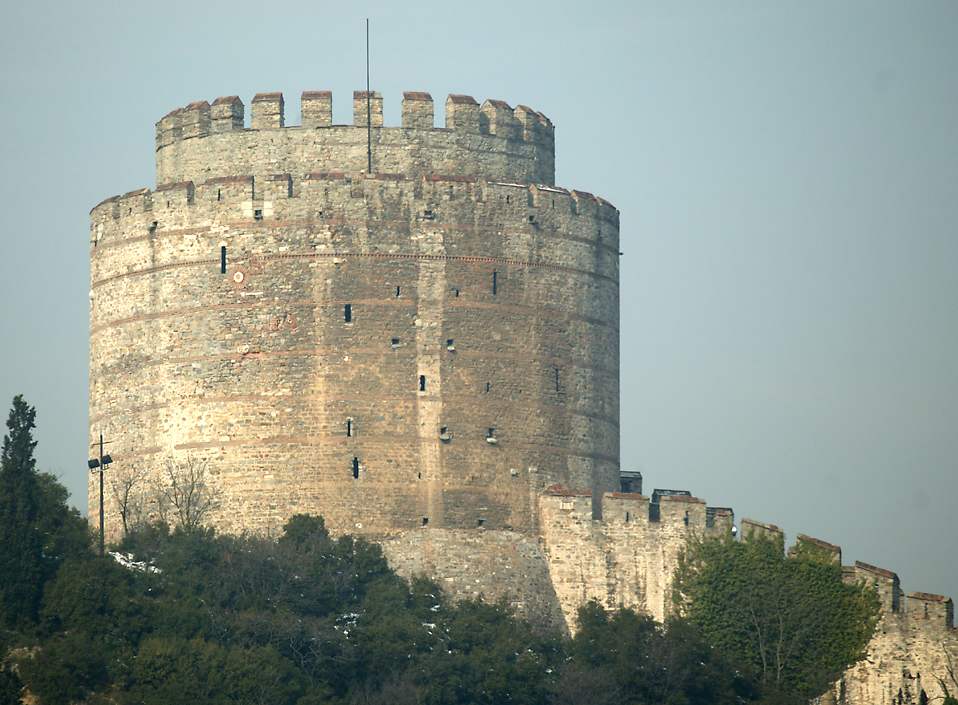 |

Nearby is the northernmost of two giant suspension bridges across the Bosporus, this one is called the Fatih bridge.
|
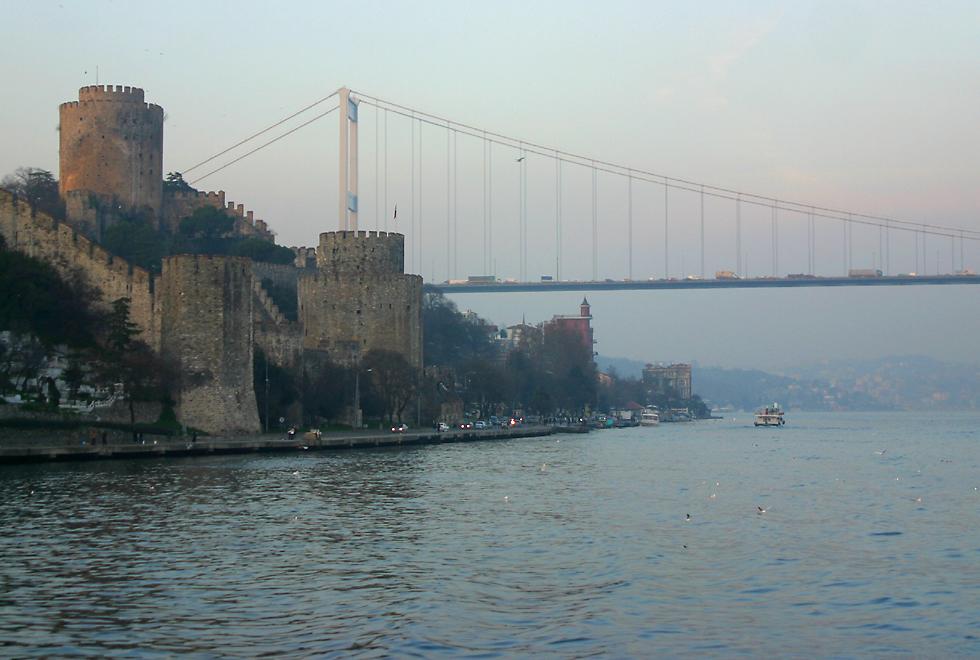 |

The fortresses and the bridges highlight the main reason for Istanbul's importance over the last two thousand years. As well as being the controlling location for traffic between the Mediterranean and the Black Sea, it also straddles the boundary between Europe and Asia. The west bank of the Bosporus is considered to be part of Europe, while the east bank is part of Asia. Therefore as well as being the only city to have been the capital of three empires, Istanbul is also the only city in the world which straddles two continents.
|
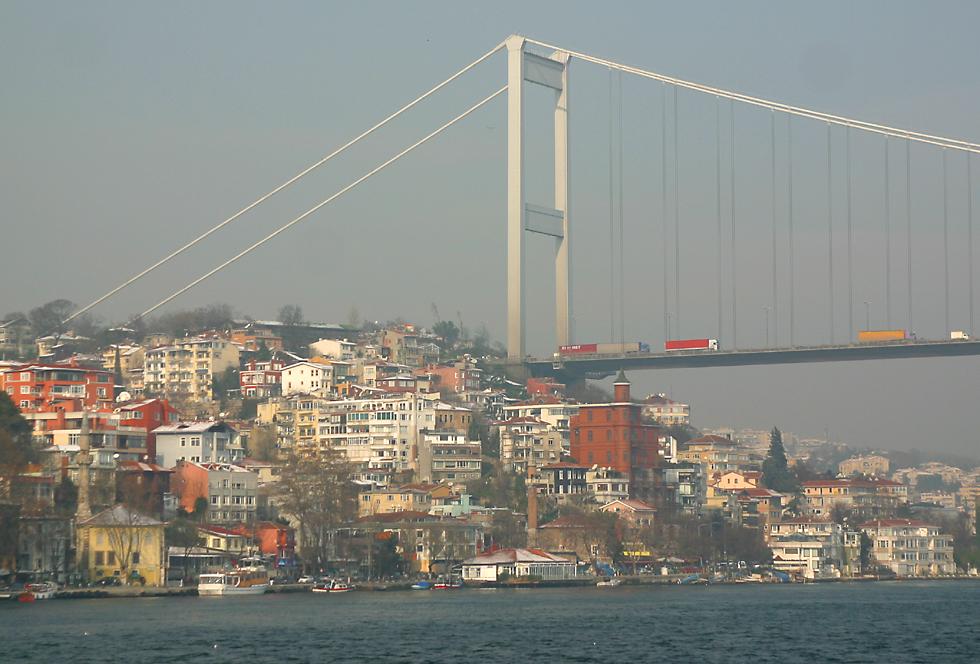 |

The Bosporus still has a lot of strategic importance, with a great deal of oil and other shipping coming down from Russia and other Black Sea countries.
|
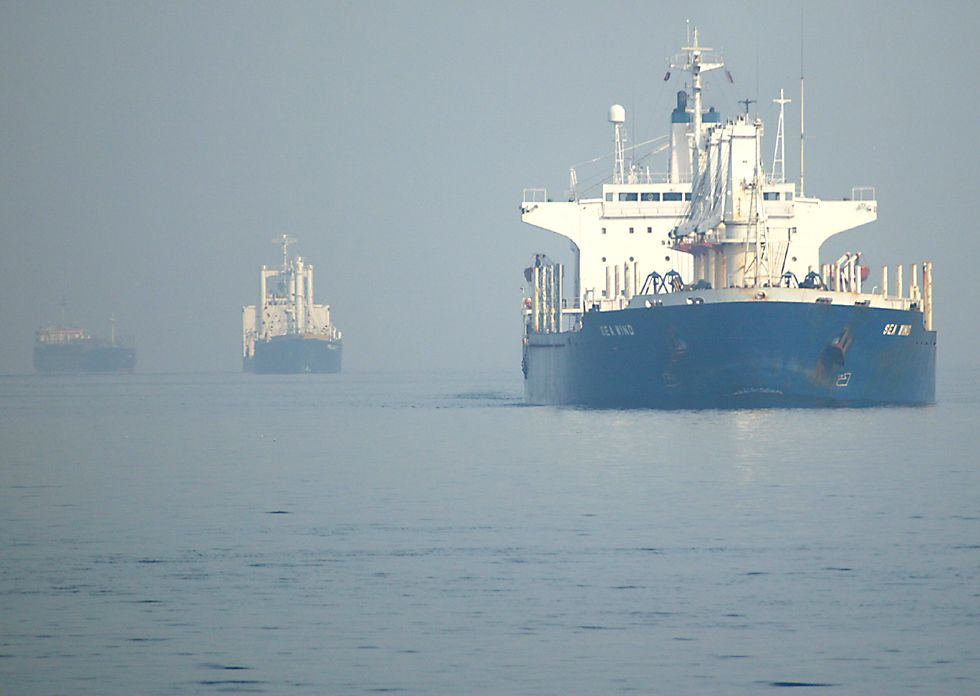 |

Carrying huge quantities of oil down the Bosporus is a continuing cause of concern for many people, not only because this is a densely populated area, but also because of the amount of environmental damage an accident would cause.
|
 |

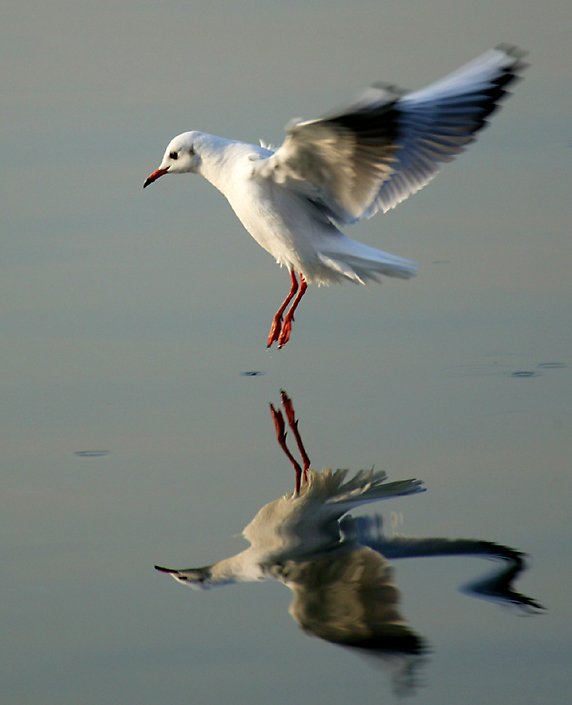
Until that day, a trip on the Bosporus is also a good way to see some of the area's birdlife.
|

Istanbul has always been a very good place to get a nice shag.
|
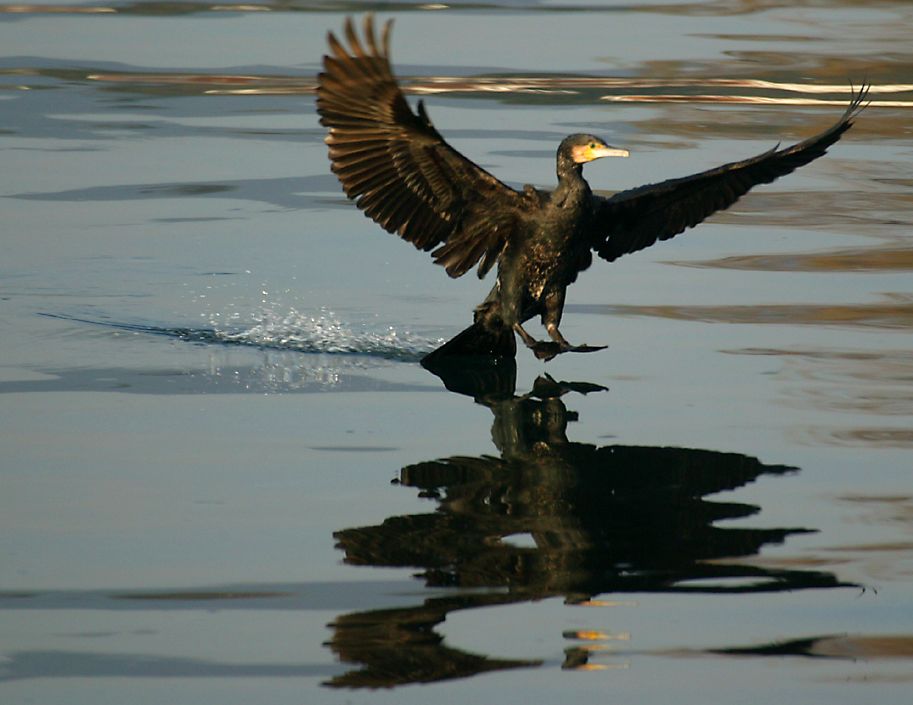 |

It's also a good place to see local people like these fishermen going about their everyday lives.
|
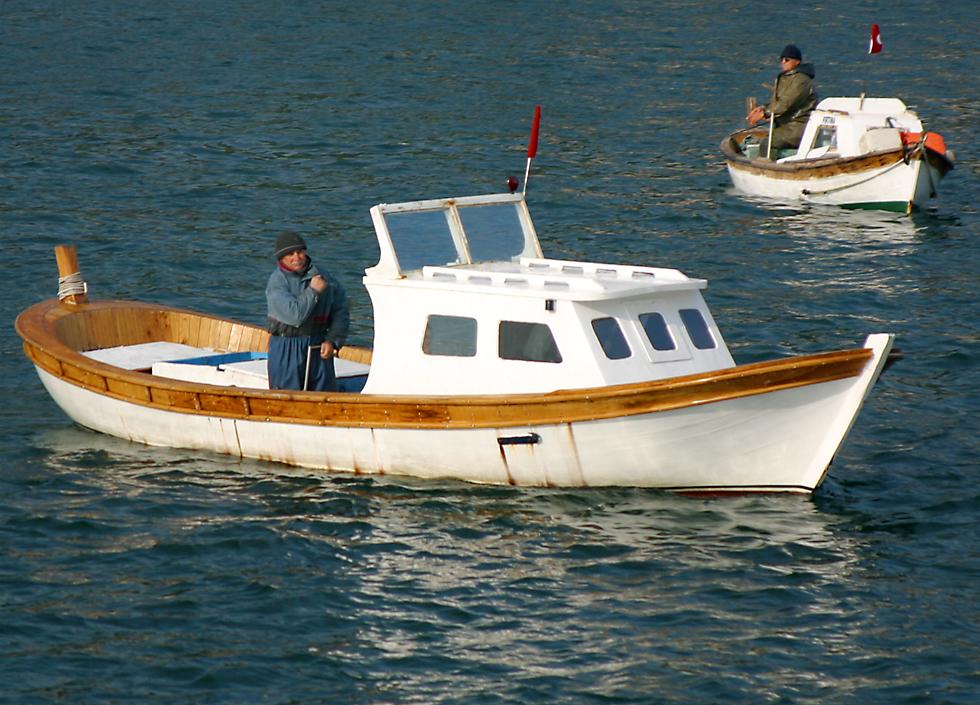 |

At the village of Anadolu Kavagi you can see some homes, presumably also belonging to fishermen. This is where the boat tours end, giving you an hour or two to eat in one of the restaurants and wander around the streets. As you can see, there's some snow lying around; I ignorantly assumed that Istanbul would have a mild winter climate like southern California, but it turns out to be much colder!
|
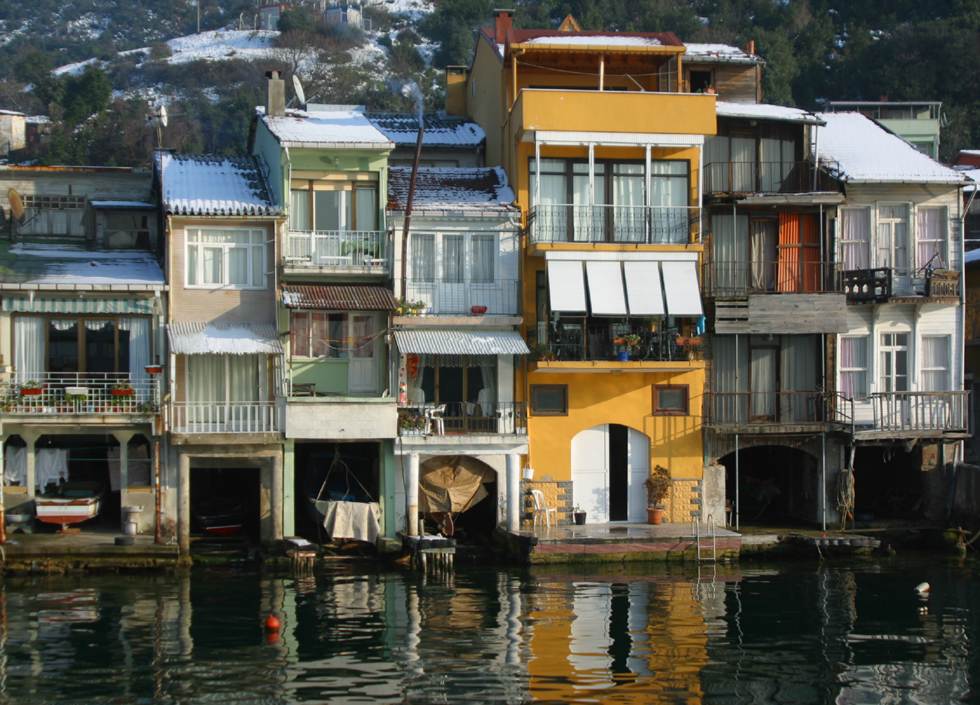 |

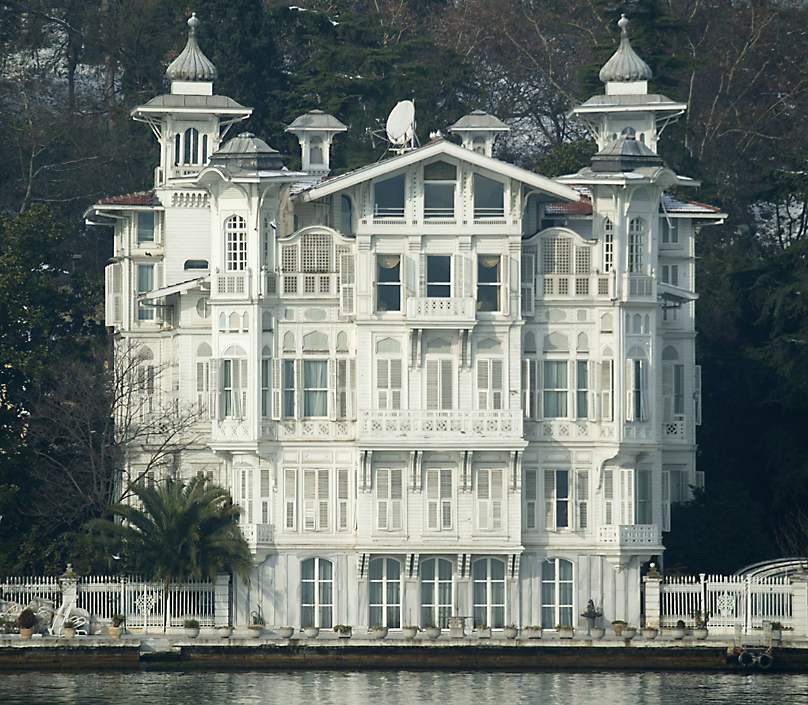
On the trip back to the city you can see many luxurious houses called yali along the banks of the Bosporus.
It looks like it would be one heck of a big job for the maids to wash all of those wooden louvres!
|

|
|
|
|


































